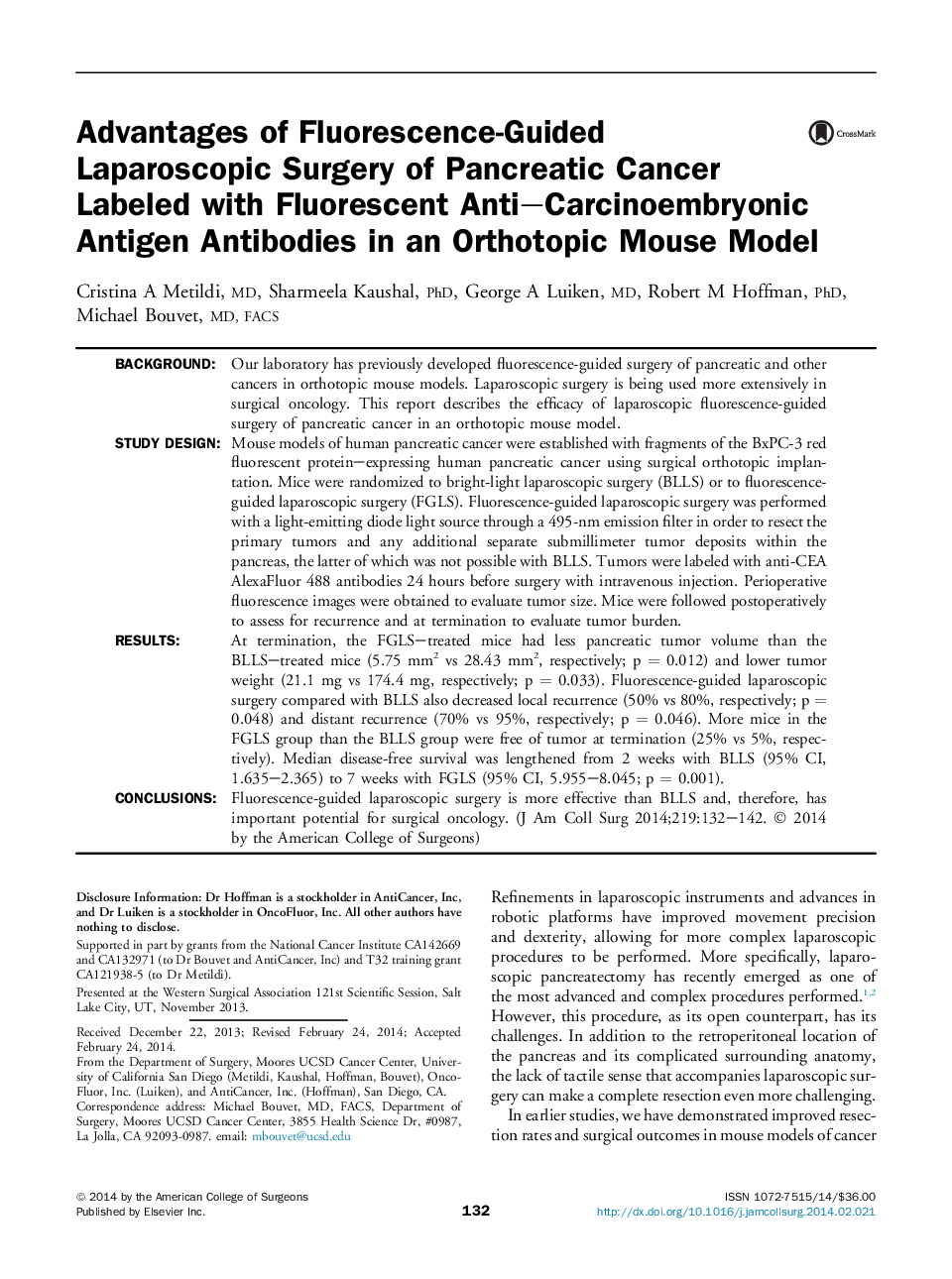| Article ID | Journal | Published Year | Pages | File Type |
|---|---|---|---|---|
| 4291643 | Journal of the American College of Surgeons | 2014 | 10 Pages |
BackgroundOur laboratory has previously developed fluorescence-guided surgery of pancreatic and other cancers in orthotopic mouse models. Laparoscopic surgery is being used more extensively in surgical oncology. This report describes the efficacy of laparoscopic fluorescence-guided surgery of pancreatic cancer in an orthotopic mouse model.Study DesignMouse models of human pancreatic cancer were established with fragments of the BxPC-3 red fluorescent protein–expressing human pancreatic cancer using surgical orthotopic implantation. Mice were randomized to bright-light laparoscopic surgery (BLLS) or to fluorescence-guided laparoscopic surgery (FGLS). Fluorescence-guided laparoscopic surgery was performed with a light-emitting diode light source through a 495-nm emission filter in order to resect the primary tumors and any additional separate submillimeter tumor deposits within the pancreas, the latter of which was not possible with BLLS. Tumors were labeled with anti-CEA AlexaFluor 488 antibodies 24 hours before surgery with intravenous injection. Perioperative fluorescence images were obtained to evaluate tumor size. Mice were followed postoperatively to assess for recurrence and at termination to evaluate tumor burden.ResultsAt termination, the FGLS–treated mice had less pancreatic tumor volume than the BLLS–treated mice (5.75 mm2 vs 28.43 mm2, respectively; p = 0.012) and lower tumor weight (21.1 mg vs 174.4 mg, respectively; p = 0.033). Fluorescence-guided laparoscopic surgery compared with BLLS also decreased local recurrence (50% vs 80%, respectively; p = 0.048) and distant recurrence (70% vs 95%, respectively; p = 0.046). More mice in the FGLS group than the BLLS group were free of tumor at termination (25% vs 5%, respectively). Median disease-free survival was lengthened from 2 weeks with BLLS (95% CI, 1.635–2.365) to 7 weeks with FGLS (95% CI, 5.955–8.045; p = 0.001).ConclusionsFluorescence-guided laparoscopic surgery is more effective than BLLS and, therefore, has important potential for surgical oncology.
